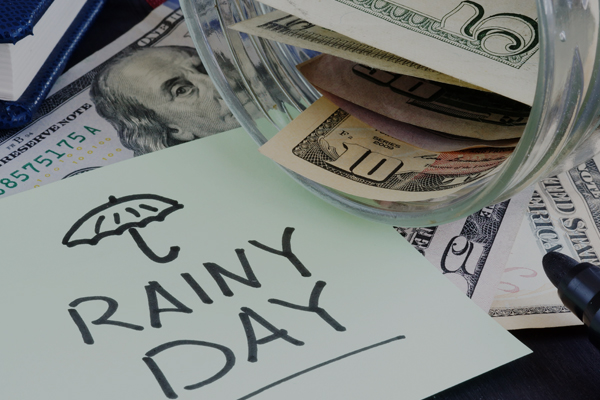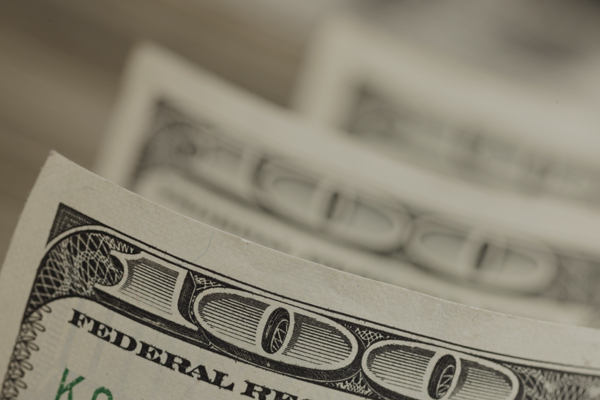


The Impact of Saving More
If you are already a saver, you might ask yourself the question "what if I save more"? Increasing your current savings rate by even 1% can yield significant results. Save even more, and the results are even better. The more you can save, and the longer you can save will open your savings up to the magic of compounding, or the ability to earn interest on your re-invested earned interest.
The Impact of Saving More
If you are already a saver, you might ask yourself the question "what if I save more"? Increasing your current savings rate by even 1% can yield significant results. Save even more, and the results are even better. The more you can save, and the longer you can save will open your savings up to the magic of compounding, or the ability to earn interest on your re-invested earned interest.
The Benefits of Compounding
How interest is calculated can have a great impact on the interest earned by your account and how your savings grow. Compound interest arises when interest is added to the principal and when the interest that has also been added earns interest. You will see your account balance grow more quickly with accounts that pay interest more frequently. The "Annual Percentage Yield" or APY is the effective annual rate of return once the effect of compounding interest is factored in.
The Benefits of Compounding
How interest is calculated can have a great impact on the interest earned by your account and how your savings grow. Compound interest arises when interest is added to the principal and when the interest that has also been added earns interest. You will see your account balance grow more quickly with accounts that pay interest more frequently. The "Annual Percentage Yield" or APY is the effective annual rate of return once the effect of compounding interest is factored in.
Save for College
Saving for a college education requires advanced planning and knowledge of what the cost of a college education will be when your student begins his college experience. You will first need to know how long it will be before your student sets foot on campus, what the cost of that education is today and how much the cost will increase between now and then. You will need to know how many years of college you will be paying for, which is dependent on the degree program being pursued. Once you have that information, you will be able to know how much you will need to save. Putting together a plan will depend on what you currently have saved, how much you can save each month and the rate of return you will receive on those savings.
Save for College
Saving for a college education requires advanced planning and knowledge of what the cost of a college education will be when your student begins his college experience. You will first need to know how long it will be before your student sets foot on campus, what the cost of that education is today and how much the cost will increase between now and then. You will need to know how many years of college you will be paying for, which is dependent on the degree program being pursued. Once you have that information, you will be able to know how much you will need to save. Putting together a plan will depend on what you currently have saved, how much you can save each month and the rate of return you will receive on those savings.
Save to be a Millionaire
Everybody wants to be a millionaire, but few have the savings discipline to get there. Your current savings, additional monthly savings and the rate of return you receive all go into saving to be a millionaire. However, it may not stop there. If you want to have a million dollars worth of purchasing power, you have to factor in inflation into your savings plan. That means that depending on the amount of time it takes you to save a million dollars you might have to have saved even more to have a million worth of purchasing power.
Save to be a Millionaire
Everybody wants to be a millionaire, but few have the savings discipline to get there. Your current savings, additional monthly savings and the rate of return you receive all go into saving to be a millionaire. However, it may not stop there. If you want to have a million dollars worth of purchasing power, you have to factor in inflation into your savings plan. That means that depending on the amount of time it takes you to save a million dollars you might have to have saved even more to have a million worth of purchasing power.
What Will My Savings Be Worth?
The future value of your savings plan is dependent on the starting balance, additional monthly savings and the rate of return you receive on those savings. For the most accurate valuation, you will have to separate taxable accounts such as savings and CDs from your tax-deferred accounts such as 401(k)s and college 529 plans.
What Will My Savings Be Worth?
The future value of your savings plan is dependent on the starting balance, additional monthly savings and the rate of return you receive on those savings. For the most accurate valuation, you will have to separate taxable accounts such as savings and CDs from your tax-deferred accounts such as 401(k)s and college 529 plans.
Save Towards a Goal
Whether you are trying to save for big screen television, a new car or for a down payment on a new home, time, money and rate of return will all be determinant factors of when you will meet your savings goal.
Save Towards a Goal
Whether you are trying to save for big screen television, a new car or for a down payment on a new home, time, money and rate of return will all be determinant factors of when you will meet your savings goal.
Save for a Rainy Day
It is always a good idea to have savings tucked away for a rainy day. Emergencies such as legal or medical bills or loss of a job can all force you into 'rainy day' mode. Planning can make these types of events easier to handle. Determine how big your rainy day savings need to be by factoring in emergency spending needs and essential spending needs if your source of income is interrupted. Once you know what you will need, put together a plan based on your current savings, monthly savings and the number of months you want to take to build your rainy day fund.
Save for a Rainy Day
It is always a good idea to have savings tucked away for a rainy day. Emergencies such as legal or medical bills or loss of a job can all force you into 'rainy day' mode. Planning can make these types of events easier to handle. Determine how big your rainy day savings need to be by factoring in emergency spending needs and essential spending needs if your source of income is interrupted. Once you know what you will need, put together a plan based on your current savings, monthly savings and the number of months you want to take to build your rainy day fund.
Compare Two CDs
A certificate of deposit (or CD) is a savings instrument offered by a bank or credit union that has a fixed date of maturity and a fixed interest rate. A credit union might use the term Share Certificate, Term Certificate or just Certificate to refer to the same product. Most CDs require a minimum deposit amount and may offer rates contingent on the size of the deposit. Certificates of Deposit are insured by the FDIC for bank deposits, or by the NCUA for credit union deposits, up to $250,000 per individual depositor. As a CD depositor, you are committing to leave your funds in the CD for the term of the CD. As a result of that time commitment, rates offered on CDs are typically higher than traditional savings or money market accounts. Keep in mind that an early withdrawal of funds will likely come with a financial penalty.
Compare Two CDs
A certificate of deposit (or CD) is a savings instrument offered by a bank or credit union that has a fixed date of maturity and a fixed interest rate. A credit union might use the term Share Certificate, Term Certificate or just Certificate to refer to the same product. Most CDs require a minimum deposit amount and may offer rates contingent on the size of the deposit. Certificates of Deposit are insured by the FDIC for bank deposits, or by the NCUA for credit union deposits, up to $250,000 per individual depositor. As a CD depositor, you are committing to leave your funds in the CD for the term of the CD. As a result of that time commitment, rates offered on CDs are typically higher than traditional savings or money market accounts. Keep in mind that an early withdrawal of funds will likely come with a financial penalty.
Calculate Your Savings at Maturity
A certificate of deposit (or CD) is a savings instrument offered by a bank or credit union that has a fixed date of maturity and a fixed interest rate. A credit union might use the term Share Certificate, Term Certificate or just Certificate to refer to the same product. Most CDs require a minimum deposit amount and may offer rates contingent on the size of the deposit. The interest you earn on your deposit depends on the interest rate, the term of the deposit and the compounding method. Deposits that compound with greater frequency will have a higher Annual Percentage Yield, or APY. Your APY is the effective annual rate of return once the effect of compounding interest is factored in. Most CDs restrict access to the funds until the CD reaches its maturity date.
Calculate Your Savings at Maturity
A certificate of deposit (or CD) is a savings instrument offered by a bank or credit union that has a fixed date of maturity and a fixed interest rate. A credit union might use the term Share Certificate, Term Certificate or just Certificate to refer to the same product. Most CDs require a minimum deposit amount and may offer rates contingent on the size of the deposit. The interest you earn on your deposit depends on the interest rate, the term of the deposit and the compounding method. Deposits that compound with greater frequency will have a higher Annual Percentage Yield, or APY. Your APY is the effective annual rate of return once the effect of compounding interest is factored in. Most CDs restrict access to the funds until the CD reaches its maturity date.












